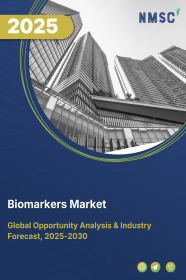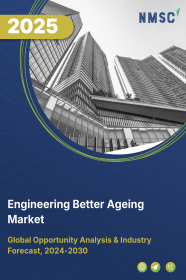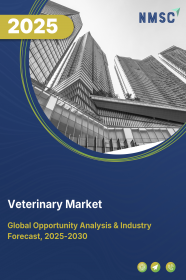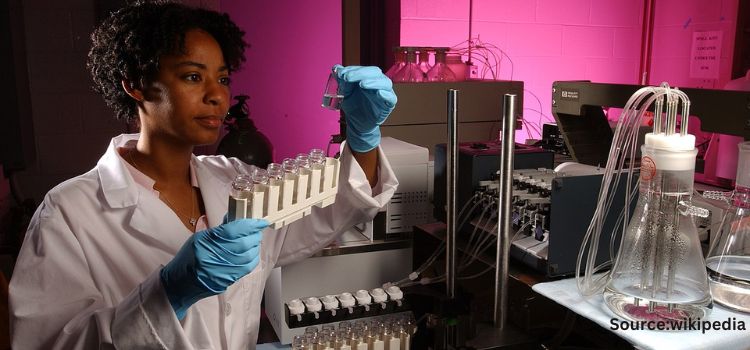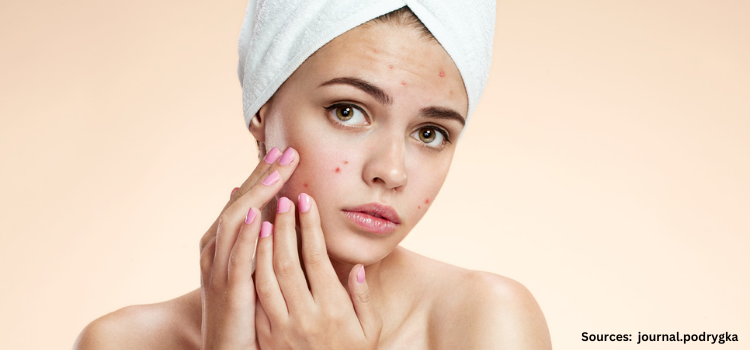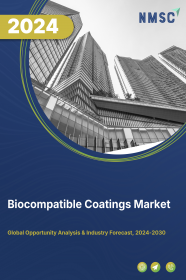
Biocompatible Coatings Market by Type (Antibacterial, Hydrophilic, and Others), by Material (Polymer, Ceramics, Metal, and Others), by Applications (Healthcare, Food & Beverage, Medical Devices, and Others)– Global Opportunity Analysis and Industry Forecast 2024–2030
US Tariff Impact on Biocompatible Coatings Market
Trump Tariffs Are Reshaping Global Business
Market Definition
The global Biocompatible Coatings Market size was valued at USD 15.48 billion in 2023 and is predicted to reach USD 35.95 billion by 2030 with a CAGR of 12.7% from 2024–2030. Biocompatible coatings refer to the specialized materials and formulations designed to create a surface or protective layer that is compatible with biological systems as the human body. The implant coatings help reduce the risk of any harmful reactions when these devices come in contact with the bodies.
Advantages of the biocompatible materials include improved patient safety, reduced inflammation, and enhanced device durability. Biocompatible coatings find diverse applications across multiple industries, prominently in healthcare, along with other industries including pharmaceutical, aerospace, and automotive by enhancing biocompatibility and performance.
Market Dynamics and Trends
The increasing availability of regulatory guidance supporting the legal submissions for medical devices that interact with the human body is a significant driver behind the growth of the biocompatible coating market. For instance, in September 2023, the Food and Drug Administration (FDA) introduced a helpful guide for the biocompatible coatings industry to prepare regulatory submissions such as Premarket Applications (PMAs), Humanitarian Device Exceptions (HDEs), Investigational Device Applications (IDEs), Premarket Notifications (510(k)s), and De Novo requests for medical devices that interact with the human body.
Moreover, the increasing utilization of biocompatible coatings in the production of cardiovascular stents, owing to rising cases of cardiovascular diseases is immensely driving the growth of biocompatible coating market. According to the World Health Organisation, cardiovascular diseases (CVDs) are the leading cause of death globally, taking an estimated 17.9 million cases each year. This underscores the pivotal role of biocompatible coatings in improving medical device performance and patient outcomes, thereby propelling the growth of the biocompatible coating market.
However, the market faces substantial constraints due to the high risk of corrosion in metallic implants, which can lead to complications such as hypersensitivity reactions and bioactivity in the human body. These challenges pose restraints on the biocompatible coatings market's expansion. On the contrary, recent advancements in ceramic and polymer coatings such as Polyether Ether Ketone (PEEK) and Titanium Dioxide (TiO2) , renowned for their diverse bioimplant applications and ability to enhance implant performance and reliability, are set to create substantial growth opportunities in the market in the coming years.
Market Segmentations and Scope of the Study
The biocompatible coatings market is segmented on the basis of type, material, applications, and region. On the basis of type, the market is divided into antibacterial, hydrophilic, and others. on the basis of material, the market is classified into polymer, ceramics, metal, and others. On the basis of applications, the market is divided into healthcare, food & beverage, medical devices, and others. Regional breakdown and analysis of each of the aforesaid segments comprises North America, Europe, Asia-Pacific, and Rest of the World (RoW).
Geographical Analysis
North America holds the dominant share of the biocompatible coatings market at present and is expected to continue its dominance during the forecast period. This is attributed to the increasing involvement of various organizations in facilitating regulatory approvals for medical devices, streamlining market access.
For instance, in August 2023, Musculoskeletal Clinical Regulatory Advisers, LLC (MCRA), aided the Surmodics, a U.S. company, to secure FDA the approval for the SurVeil drug-coated balloon. This emphasized the importance of biocompatible coatings in treating peripheral artery disease (PAD). It emphasizes on collaboration between the Regulatory and Biocompatibility teams, which enabled MCRA to both develop the robust technical discussions and then articulate them to FDA in terms of safety, effectiveness and favorable benefit-risk profile. This, in turn is expected to positively impact the market of biocompatible coatings in this region.
Additionally, growing collaboration strategies by the key market players such as De Nederlandse Staatsmijnen (DSM) Biomedical, SurModics, Inc., and Hydromer Inc., are increasing the demand for biocompatible coatings in this region. For instance, in March 2022, DSM Biomedical partnered with Svelte Medical Systems to advance the development of DISCREET bioresorbable coating technology. This collaboration strategy enhanced the research and development of biocompatible coatings in healthcare further driving the growth of biocompatible coatings market.
On the other hand, Europe's biocompatible coatings market shows a steady rise, driven by a comprehensive partnership strategy that covers diverse aspects of product development and market entry for biocompatible coating solutions. For instance, in February 2023, BioInteractions launched an expanded product pathway partnership at Medical Design & Manufacturing (MD&M) West. This comprehensive offering includes custom coatings, optimized application and tooling, testing, regulatory guidance, and commercial production, facilitating smoother product advancement and market entry for biocompatible coating solutions into the market.
Moreover, growing strategic expansion in the European region is driving growth of the market by strengthening research and development capabilities, and enhancing distribution networks. For instance, in July 2023, Corline Biomedical AB, a developer of heparin-based biocompatible coating pharmaceuticals, expanded its business through the establishment of Corline Pharma, a subsidiary at the AstraZeneca BioVentureHub in Mölndal, Sweden. This strategic expansion aims to drive innovation in pharmaceutical applications, further driving the growth of the European biocompatible coatings market.
Competitive Landscape
The biocompatible coatings industry comprises various market players including SurModics, Inc., DSM Biomedical, Biocoat, Inc., Hydromer Inc., Covalon Technologies Ltd., Hemoteq AG, Corline Biomedical AB, BioInteractions, Heraeus Holding, Harland Medical Systems, and Others. These market players are adopting various partnerships and expansions as their key developmental strategies across various regions to maintain their dominance in the biocompatible coatings market.
For instance, in April 2022, Biocoat, Inc., launched EMERSE, which is an expansion into the design, development, and delivery of hydrophilic dip coating equipment. The company's new equipment line is designed to meet the rigorous requirements of the medical device, pharmaceutical, biotechnology, and life science industries.
Also, in April 2020, SurModics, Inc. partnered with Cook Medical, which is a manufacturer of medical devices, where Cook Medical will distribute two novel Surmodics products: hydrophilic percutaneous transluminal angioplasty (PTA) balloon catheters. This collaboration is driving the market growth for biocompatible coatings by expanding the availability of enhanced medical devices, meeting the increasing demand for safer and more effective healthcare interventions.
Key Benefits
-
The biocompatible coatings market report provides a quantitative analysis of the current market and estimations through 2024–2030 that assist in identifying the prevailing market opportunities to capitalize on.
-
The study comprises a deep dive analysis of the current and future biocompatible coatings market trends, depicting the prevalent investment pockets in the market.
-
The information related to key drivers, restraints, and opportunities and their impact on the biocompatible coatings market is provided in the report.
-
The competitive analysis of the key players along with their market share in the biocompatible coatings industry is mentioned.
-
A SWOT analysis and the Porter's Five Forces model is elaborated on in the study.
-
Value chain analysis in the market study provides a clear picture of the stakeholders’ roles.
Biocompatible Coatings Market Key Segments
By Type
-
Antibacterial
-
Hydrophilic
-
Others
By Material
-
Polymer
-
Ceramics
-
Metal
-
Others
By Applications
-
Healthcare
-
Food & Beverage
-
Medical Devices
-
Others
By Region
-
North America
-
U.S
-
Canada
-
Mexico
-
-
Europe
-
UK
-
Germany
-
France
-
Italy
-
Spain
-
Denmark
-
Netherlands
-
Finland
-
Sweden
-
Norway
-
Russia
-
Rest of Europe
-
-
Asia-Pacific
-
China
-
Japan
-
India
-
South Korea
-
Australia
-
Indonesia
-
Singapore
-
Taiwan
-
Thailand
-
Rest of Asia-Pacific
-
-
Rest of the World (RoW)
-
Latin America
-
Middle East
-
Africa
-
Key Players
-
SurModics, Inc.
-
DSM Biomedical
-
Biocoat, Inc.
-
Hydromer Inc.
-
Covalon Technologies Ltd.
-
Hemoteq AG
-
Corline Biomedical AB
-
BioInteractions
-
Heraeus Holding
-
Harland Medical Systems
REPORT SCOPE AND SEGMENTATION:
|
Parameters |
Details |
|
Market Size in 2023 |
USD 15.48 billion |
|
Revenue Forecast in 2030 |
USD 35.95 billion |
|
Revenue Growth Rate |
CAGR of 12.7% from 2024 to 2030 |
|
Analysis Period |
2023–2030 |
|
Base Year Considered |
2023 |
|
Forecast Period |
2024–2030 |
|
Market Size Estimation |
Billion (USD) |
|
Growth Factors |
The global shift towards making safe medical devices for human body. Rising demand for enhanced biocompatibility in metallic implants |
|
Countries Covered |
28 |
|
Companies Profiled |
10 |
|
Market Share |
Available for 10 companies |
|
Customization Scope |
Free customization (equivalent up to 80 working hours of analysts) after purchase. Addition or alteration to country, regional, and segment scope. |
|
Pricing and Purchase Options |
Avail customized purchase options to meet your exact research needs. |

















 Speak to Our Analyst
Speak to Our Analyst



